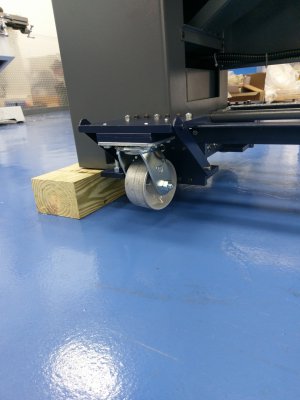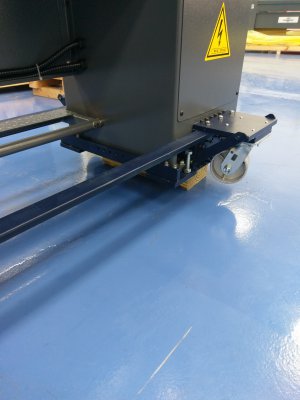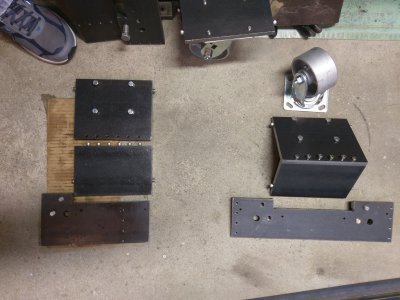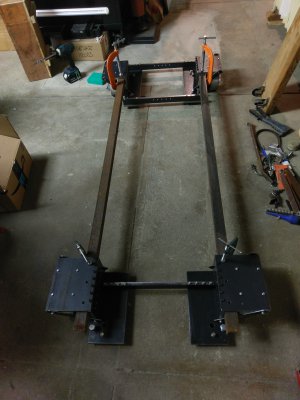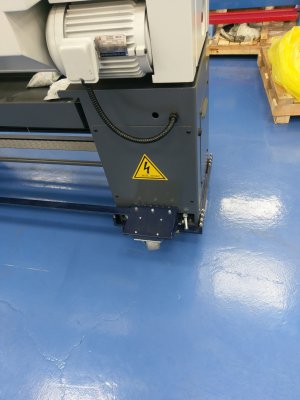Nice to have the drawers under the lathe. There is not room for them the way my PM1440GT is built at the factory. However it comes with stands mounted at the two ends.
I made caster mounts for each of the 4 corners of the lathe feet locations and mounted external casters. These mounts have a 1/2" thick steel plate that bolts to the original stand bottom bolt holes but stick out far enough to attache my caster brackets as well as to have a tapped 1/2" bolt hole which I then use for leveling bolts. I went to PM measured the bottom of the stands carefully, built the caster mounts and then went back and mounted it all together at PM. (PM was very nice to let me do this and to lend a hand when needed. Tony was a big help! He also raised the lathe so that we could block it while I mounted things.) We rolled it all round the floor at PM. It rolled smoothly and neither the lathe nor the casters appeared to flex at all. Later they blocked it on a pallet and delivered it to me. (I also live in Pittsburgh.) We had to roll the lathe down a short hallway and turn and go into a smallish door and the casters worked great for this. I attached the two lathe stands together at the bases by a couple of angle iron rods running from end to end.... to stabilize the stands during movement, but I don't really think they were needed. These come off easy. In addition there are two bars that tie the front and back stand plates together. So that every thing can be easily removed, if needed, the caster mounts etc are all bolted together with 1/4-20 bolts, even though welding would have saved a lot of machining, drilling and tapping time. By using the off board caster brackets I did not raise the over all height of the lathe much.
So the 6 long 1/2" leveling bolts (four at the spindle and 2 at the tail stock stands) easily lift the lathe off of the casters once in place. However, I also did a more modern (solid state control electronics) VFD conversion to allow the 3 phase motor to run on single phase at variable speed with additional features. This is all mounted in the original electronics hole in the back of the lathe stand (no external boxes). With this lousy factory location for the electronics, being able to roll the lathe out from the wall to work at the back side is really nice! See Figures in the attachment "PM 1440GT Part 1 FacOriglElecDescript DNL L910_1440.pdf" at my VFD conversion posting:
VFD conversion using solid state electronic components. I finally finished documenting my PM1440GT lathe VFD conversion and want share it. It took me longer to write this up than it did to actually build the new electronics! (Are these sorts of things every really finished?) I apologize...

www.hobby-machinist.com
I will also post a few pictures here as attachments:
More pictures are attached.
One of these days, I will roll the lathe out and lay shower floor rubber down under the lathe to keep oil off of the basement concrete! I did this for my mill and the casters roll right across the thin rubber without it buckling up. It has been great for this purpose. I also put some cardboard down on top of the rubber to soak up the oil splashes and leaks! There is a lot of oil around when the mill flood cooling is used.



